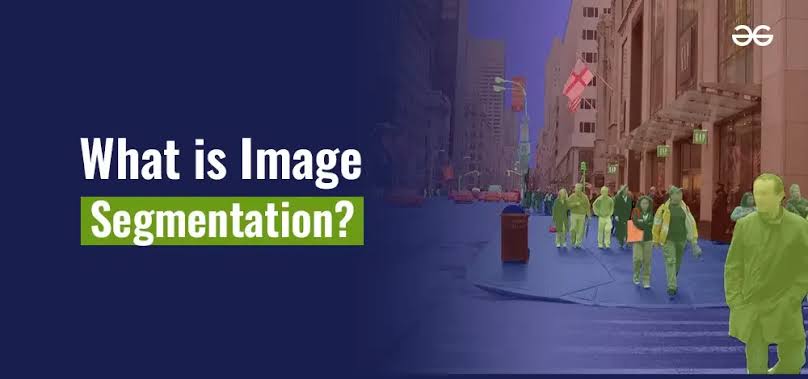Image segmentation is fundamental task in computer vision and image processing. It aims at partitioning an image into meaningful segments or regions. This process plays a crucial role in various applications. These include medical imaging autonomous driving, satellite imagery analysis and more. This article explores different algorithms and techniques used for image segmentation. It highlights their methodologies advantages and applications.
Image segmentation involves dividing an image into multiple regions. Or segments. This simplifies the representation of image and makes it easier to analyze. Unlike image classification, which assigns a label or category to an entire image image segmentation aims to identify and delineate individual objects. Or regions within an image. This fine-grained analysis essential for extracting valuable information from complex visual data.
Thresholding is one of simplest methods for image segmentation based on setting a threshold value to distinguish between foreground and background pixels. Common thresholding techniques include
- Global Thresholding: Applies a single threshold value to the entire image.
- Adaptive Thresholding: Adjusts the threshold value for different regions of the image based on local pixel intensity.
Thresholding techniques are straightforward and computationally efficient but may struggle with images containing varying lighting conditions or complex backgrounds.
Edge-Based Segmentation
Edge detection methods identify boundaries or discontinuities in pixel intensities, which often correspond to object boundaries in an image. Popular edge detection algorithms include:
- Sobel Operator: Computes gradient magnitudes in horizontal and vertical directions to detect edges.
- Canny Edge Detector: Applies multiple stages of edge detection, including noise reduction, gradient calculation, non-maximum suppression, and hysteresis thresholding.
Edge-based segmentation is effective for images with well-defined edges but may struggle with noisy images or objects with unclear boundaries.
Region-Based Segmentation
Region-based segmentation techniques group pixels into regions based on similarity criteria, such as color, texture, or intensity. These methods include:
- Region Growing: Starts with seed points and grows regions by adding neighboring pixels that satisfy predefined similarity criteria.
- Split and Merge: Divides an image into smaller regions (split) and merges regions with similar properties to achieve uniformity.
Region-based segmentation is robust to noise and variations in lighting but requires careful selection of similarity measures and parameters.
Clustering-Based Segmentation
Clustering algorithms partition pixels into clusters based on feature similarity. K-means clustering is a popular technique for image segmentation, where pixels are grouped into k clusters based on their feature vectors, such as color or intensity. The centroids of these clusters represent segment boundaries in the image.
Watershed Transform
The watershed transform treats pixel intensities as a topographical surface, where flooding from specified markers determines segment boundaries. It is particularly useful for segmenting overlapping objects or objects with unclear boundaries in an image.
Deep Learning Approaches
Recent advancements in deep learning, particularly convolutional neural networks (CNNs), have revolutionized image segmentation. Techniques like:
- Fully Convolutional Networks (FCNs): Adapt CNN architectures for pixel-wise prediction, generating segmentation masks directly from input images.
- U-Net: A specialized architecture for biomedical image segmentation, combining contracting and expanding paths to capture context and localize details.
Deep learning-based approaches leverage large datasets for training and excel at handling complex image structures and variations.
Applications of Image Segmentation
Image segmentation finds applications across various fields:
- Medical Imaging: Segmenting organs or tumors from medical scans for diagnosis and treatment planning.
- Autonomous Driving: Identifying pedestrians, vehicles, and obstacles in real-time for navigation and collision avoidance.
- Satellite Imagery: Analyzing land cover, vegetation, and urban development patterns from satellite images.
- Industrial Quality Control: Inspecting products for defects and anomalies in manufacturing processes.
Challenges and Considerations
Despite advancements, image segmentation still faces challenges such as:
- Over-Segmentation: Producing too many small segments, reducing segmentation accuracy.
- Under-Segmentation: Merging distinct objects or regions into a single segment.
- Computational Complexity: Some techniques, especially deep learning methods, can be computationally intensive and require powerful hardware for real-time applications.
Future Directions
The future of image segmentation lies in integrating multiple techniques, such as combining deep learning with traditional methods to enhance accuracy and efficiency. Furthermore, research continues into improving robustness against noise, handling large-scale datasets, and developing adaptive segmentation algorithms.
Conclusion
Image segmentation is a critical task in extracting meaningful information from visual data, enabling applications across diverse domains. By leveraging various algorithms and techniques—from thresholding and edge detection to deep learning—researchers and practitioners can advance the capabilities of image analysis systems. As technology evolves, the challenges of image segmentation are being addressed, paving the way for more accurate, efficient, and versatile segmentation solutions in the future.
